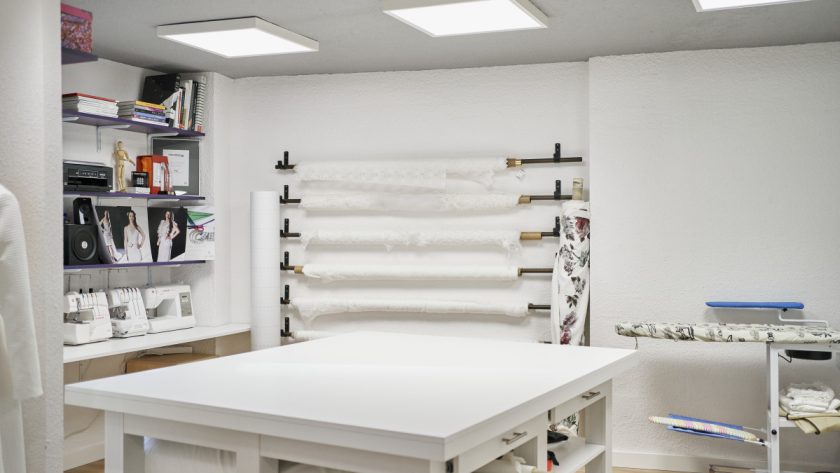A fashion school’s website and promotional material can provide tons of helpful information for prospective students, but there are certain crucial details about the first-year experience that remain an enigma to many. Like, do you need prior sewing experience? Is it anything like “Project Runway”? How soon can you get an internship?
Some of the most common questions on what you can expect in your first year of fashion school can really only be answered by someone who’s done it. I studied fashion design and merchandising as an undergraduate, then proceeded to get my master’s degree in fashion studies at Parsons School of Design. I’ve since spent time as an academic and career advisor, as well as a faculty member, at Parsons, LIM College and Marymount Manhattan College. So, I’ve been on all sides of the fashion school experience, from taking notes in a lecture hall to doling out grades during midterms to advising students on the courses that best fit their schedules and interests.
Don’t just take my word for it, though: With application season upon us, I spoke with other experts from Parsons, Rhode Island School of Design (RISD) and LIM College to gain further insight into what incoming students should anticipate as they enter fashion school. Like John Bauernfeind, associate director of curriculum for Parsons’ BFA Fashion program, says, that first year is a sort of catalyst for what’s to come, “establishing critical thinking and expanding the possibilities for how they approach fashion later.”
Here are five things to know as you embark on this chapter.
Having some craft experience helps
As a former advisor and faculty member at Parsons, I often saw students fall significantly behind because they expected to take introductory courses on sewing, pattern making, draping and so on. Francesca Ferrono, Ph.D., also a former academic and career advisor at Parsons, agrees that coming in with zero experience can potentially mean students “have a huge hill to climb in their first few semesters.”
While it’s not usually outright stated that students need a certain level of craft knowledge, it certainly sets you up for success if you have some experience and foundational understanding of construction techniques, including how to operate a sewing machine. Bauernfeind explains: “Having an ability to make things with their hands will help students translate ideas into form.”
Students may be surprised to find out that they may not immediately jump into design and making classes in their first year. (The first few terms might instead be devoted to exploring the creative process.) RISD Apparel Design Department Head Gwen van den Eijnde notes that one of the unexpected challenges students encounter in their first year is underestimating “the time it takes to feel confident constructing garments.”
“You need to understand basic techniques of cut and construction before moving to more complicated designs,” she argues.
Time management might be the crucial skill
Going from an 8 a.m.-to-3 p.m. schedule in high school to choosing your own adventure with your course load is challenging enough. Factoring in the time it takes to ideate and execute a design is even tougher, and can often prove elusive to new students.
“Time management and developing a system of working are common challenges,” says Parsons’ Bauernfeind. Balancing living in a new city, finding community, seeking out internship opportunities, “along with substantial school work where expectations of pushing boundaries (abound and can be) overwhelming.”
Once enrolled, students have to adapt to “getting creative on a schedule,” Ferrono explains: “For folks who are usually driven by inspiration, adhering to deadlines and prompts can feel unnatural and, at worst, paralyzing.”
It’s also important to make time for creativity outside of the classroom, she adds. She recommends students “invest time into creativity in a way that’s just for yourself. It’s important to still love creating when you’re in the thrust of midterms or finals, and feel you may not have time for yourself or to do the things you love.”
Be (actually) open to feedback
Much of the creative process requires critique — but, as artists, we’re sensitive about our work. At times, feedback can feel harsh and uncomfortable. The goal, though, is for you to improve and challenge yourself.
“It’s natural for artists to personalize things,” says Ferrono. “But those who seek an education should be committed to hearing other perspectives and to their own growth.”
RISD’s van den Eijnde echoes this sentiment: “Students need to fully bring themselves into the studio and deeply commit to the process.”
Open yourself up to finding inspiration everywhere
While students may feel compelled to remain within their school’s campuses to get work done, remember to explore your new surroundings beyond studio walls.
“Going to museums, galleries, performances, events, etc. that stimulate creativity creates an important foundation to develop or enhance their point of view,” says Bauernfeind.
RISD’s van den Eijnde also suggests “engaging in conversation with others, seeing exhibitions, reading books and watching films. Research the art and design that you are drawn towards.”
Look to both your peers and professors for advice
Don’t just rely on your advisors to guide you in your decision-making. Students who are just a year or two ahead in the program can often provide suggestions and helpful tips on courses, internships and other resources.
“Folks who have been through your program should be able to give you wise advice,” Ferrono says.
Of course, also take advantage of access to faculty, as many of them have significant experience and connections to the industry. And come prepared.
“Get to know the resources at your college, like the Career Services Office or your faculty members who often work in the field of fashion,” says former LIM College First Year Program Manager Michelle Ng. “Begin with a goal in mind — if you want to work backstage at NYFW, send an email to your public relations professor or a member of the college advisory board to see if they have any opportunities available. High-level professionals were all young once, and you may be surprised how eager people are to help college students who wish to learn.”
Never miss the latest fashion industry news. Sign up for the Fashionista daily newsletter.



